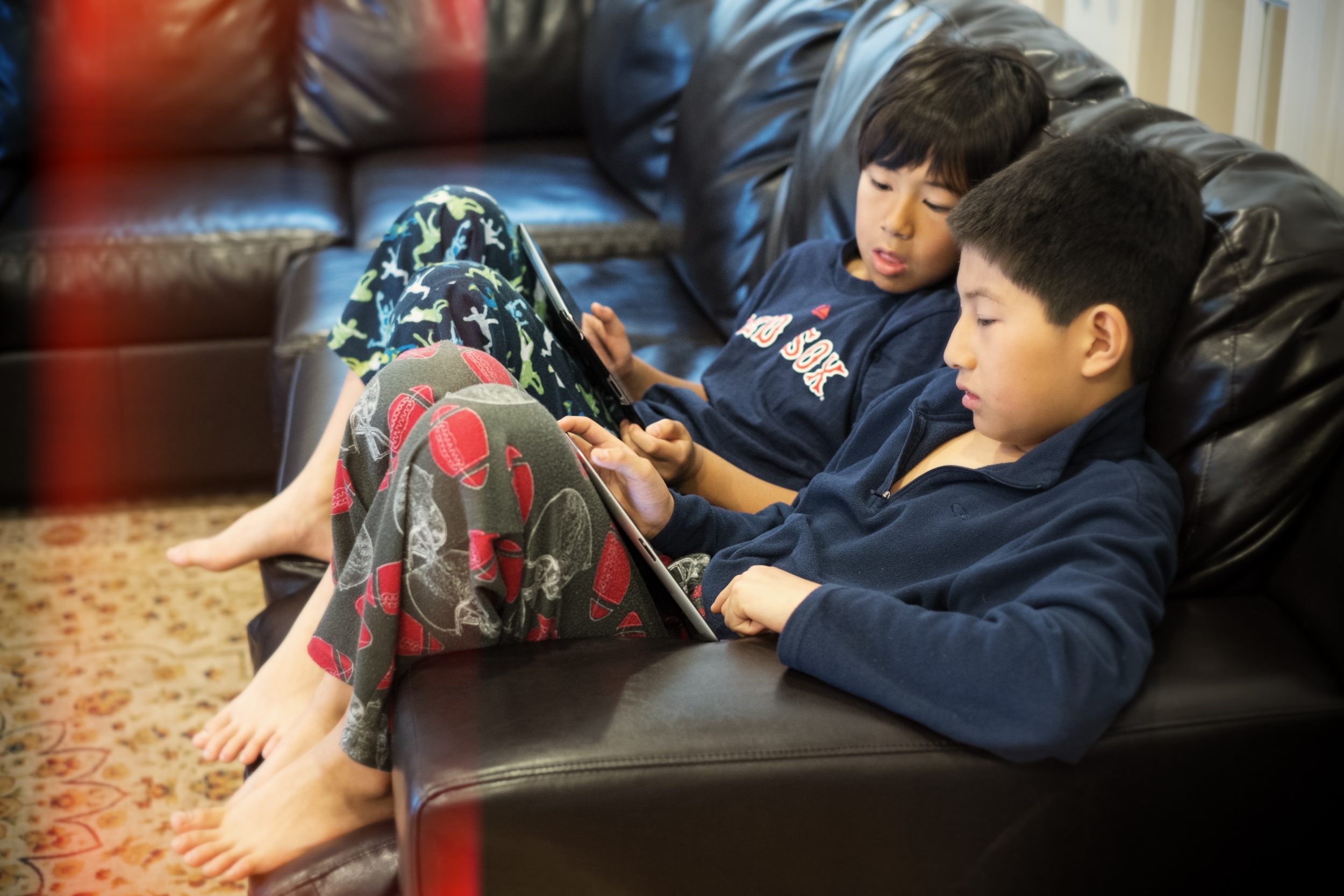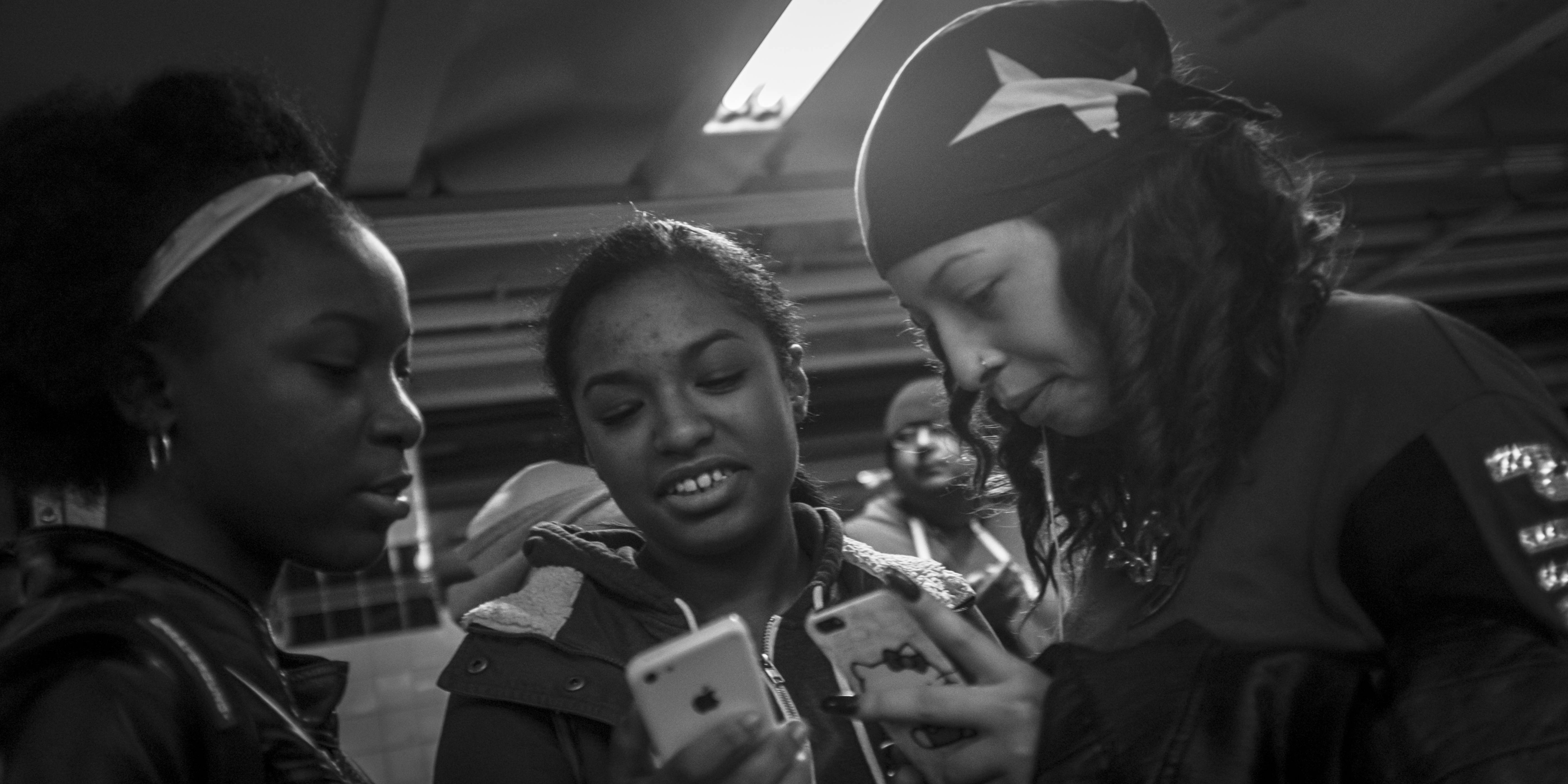 One of the side effects of the COVID-19 pandemic and subsequent lockdowns has been an increased use of the internet and accompanying technologies. Participants at a recent webinar on technology and mental health, featuring leading clinical and academic experts in this area, emphasised the need to urgently take a closer look at the impact of technology use on the mental health of children and adolescents. The online event was organised by the UK Council for Internet Safety Evidence Group (UKCIS) and supported by the UKRI Mental Health Network (eNurture) and the Department for Digital, Culture, Media and Sport (DCMS). In this post, the event chair and Middlesex University Criminologist Dr Elena Martellozzo explains some of the key points that were presented.
One of the side effects of the COVID-19 pandemic and subsequent lockdowns has been an increased use of the internet and accompanying technologies. Participants at a recent webinar on technology and mental health, featuring leading clinical and academic experts in this area, emphasised the need to urgently take a closer look at the impact of technology use on the mental health of children and adolescents. The online event was organised by the UK Council for Internet Safety Evidence Group (UKCIS) and supported by the UKRI Mental Health Network (eNurture) and the Department for Digital, Culture, Media and Sport (DCMS). In this post, the event chair and Middlesex University Criminologist Dr Elena Martellozzo explains some of the key points that were presented.
Understanding the digital environment is crucial if we want to address the impact of technology on young people’s mental health effectively. “The digital world will not go away, and it’s only when we get evidence-based guidance and knowledge which helps parents, professionals and young people directly, that we will advance this whole debate” said Gordon Harold, Professor of the Psychology of Education and Mental Health at the University of Cambridge and eNurture Director.
Further research into the impact of technology on mental health is essential, argues the Nurture Network (eNurture), a UKRI funded programme, which has seven associated networks, and is funding start up research projects and practical interventions designed to examine how the digital world is changing and its impact on young people.
“The last decade has seen a startling level of technological innovation,” said LSE’s Professor Sonia Livingstone OBE, eNurture Network Deputy Director. “We’ve moved, I’d suggest, from seeing technology as a valued addition to our lives, to seeing technology as vital infrastructure. And as COVID-19 has made really clear, for young people especially, life is digital by default.”
As technology becomes a crucial part of our everyday, what is the impact on the mental health of children and young people? The COVID-19 pandemic and subsequent lockdowns have seen children and young people off school for long periods and spending even more time online, either learning, playing or socialising.
“Being online can be a hugely positive experience for adults, children and young people, however it also presents a risk of harm and there is growing concern about the relationship between technology and the mental health of children and young people,” explained Rachel Bishop, the Deputy Director of Online Harms Policy at DCMS.
Bishop continued, “The pandemic has brought this into sharp focus with children’s screen time averaging nine hours per day during lockdown, which is nearly double the average prior to COVID-19 (according to the Pandemic Parenting Report). A study by Ofcom has found that children were lacking structure and routine, and were instead spending a large amount of time online, often unsupervised. While screen based online platforms can support learning, social networks and reduce feelings of loneliness; they can also impact mood, self-esteem and body image as a result of extended or prolonged time engaged with screens.”
Dr Bernadka Dubicka, Chair of Faculty of Child and Adolescent Psychiatry, Royal College of Psychiatrists found evidence that the mental health crisis among young people in the UK is rising significantly alongside the growing reliance on technology. In 2020, one in six children aged five to 16 were identified as having a probable mental disorder, an increase from one in nine (10.8%) in 2017, according to The Mental Health of Children and Young People in England 2020 report. The increase was evident in both sexes: from 2017 to July 2020 the rate rose in boys aged 5 to 16 from 11.4% to 16.7%, and in girls from 10.3% to 15.2%.
The Good Childhood report 2020 concluded that among 24 countries reviewed, UK adolescents between 10 and 15 years were doing the least well. The NHS Digital Prevalence Survey 2018 of children aged 11 to 19 showed those with disorders were much more affected by social media – for example nearly 42% of those with mental health disorders compared to 25% without compared themselves to others; 27.2% of those with disorders compared to nearly 14% without admitted that “likes”, shares and people’s comments affected their mood; 66.6% of those with disorders compared to 52.8% without spending more time than they meant to online.
Children and young people with mental health problems are often turning for help because of content on social media. Victoria Hornby, CEO of Mental Health Innovations which runs the 24-7 crisis helpline Shout, said suicide deaths of celebrities “spark anxiety among young people” so they contact support services. “Within 15 minutes of the death of Caroline Flack, we were beginning to see a significant increase in volume on our platform,” she said.
The negative impact of too much screen time on young people’s development has also been well documented. A review paper published by the World Psychiatric Association the “online brain”: how the internet maybe changing your cognition concluded that “excessive Internet use impairs brain and verbal development”, “mass acceptable/rejection/social comparisons affects self-esteem” and “media multi-tasking affects attention and memory”. The World Health Organisation recommends limiting screen time for children aged one to four to one hour per day, stating the “potential benefit of reducing sedentary screen time outweighs the possible harms/costs & may increase health equity”.
This may seem extreme, but technological use starts at a very early age. A third of patients referred to NHS England’s National Centre for Gaming Disorders started video gaming aged six years or younger, according to its founder Dr Henrietta Bowden-Jones, OBE. She said many of the patients were “very thin or obese”, with “poor eating habits, self-care and little exercise”, and suffered from loss of self-esteem, social anxiety, low mood, poor regulation and boredom. Resulting in attachment issues, with gaming providing their only source of “escapism, connection, communication and acceptance, achievement”. Clearly this is a double-edged sword, where the benefits of the social aspect of gaming can also isolate young children and impair their ability to create real life connections with others.
“Half of the children turned violent, sometimes very violent, when things were taken away which stopped them from gaming, in some families the police were called 20 or 30 times – I had underestimated the terrible impact on families,” said Dr Bowden-Jones.
What can be done to make the online environment a safer space for children and young people?
Rachel Bishop of DCMS said its plans for online harms legislation will ensure companies are more “responsible for people’s safety online, especially children”. The Government will publish its response shortly to the white paper – the Adult Online Hate, Harassment and Abuse assessment, with legislation following next year. This will be accompanied by non-legislative initiatives including a media literacy strategy and safety by design framework.
Academic and clinical experts agree that there must also be an onus on technology companies to address concerns about the impact of their technology on young people’s mental health.
Dr Mark Griffiths, the Director of the International Gaming Unit at Nottingham Trent University, said structural characteristics – such as the ‘Like’ button on social media or the event frequency in gambling – can play a role in whether or not someone will have a problem with technology. “If you’ve got a product and you know a small minority of your clientele are going to have a problem with it, you have to take responsibility,” argued Dr Griffiths. “The great thing about technology is we can actually harness that technology to help treat those people who unfortunately do suffer from problematic or addictive behaviours”.
To the question if there was one thing that you would change about the digital world, what would that be? posed by Dr Graham Richard, Psychiatrist & Clinical Director, Good Thinking, Dr Dubicka answered: “Global togetherness on technology, regulation, safety and responsibility from the tech companies, as we have seen for climate change”.
“We need to have a much clearer signposting of safe sources for help” said Victoria Hornby. “We have young people who regularly contact us saying ‘I did an online quiz to see if I have depression or an eating disorder’ and the random searching with completely unfiltered content can be damaging for children”.
This webinar highlights that children and young people’s lives are digital by default and therefore what they experience online inevitably influences their lives and vice versa. The webinar also presented research evidence suggesting that children and young people are vulnerable and at risk of online harms (from gambling, to the exposure of inappropriate content) and the impact that these may have on their mental health is detrimental.
Prioritising the mental health of children and young people is indeed an investment for everybody’s future. To address effectively the concerns we have, it is essential that research experts continue to share their empirical evidence and influence policy and practice. It is equally important to promote opportunities to support children and young people’s wellbeing and providing appropriate interventions when needed, as highlighted by our presenters from the National Centre for Gaming Disorders, Shout and Good Thinking.
Middlesex University press officer Paul Harper contributed to this post. This article represents the views of the author and not the position of the Media@LSE blog, nor of the London School of Economics and Political Science.
Featured image: Photo by Igor Starkov on Unsplash





